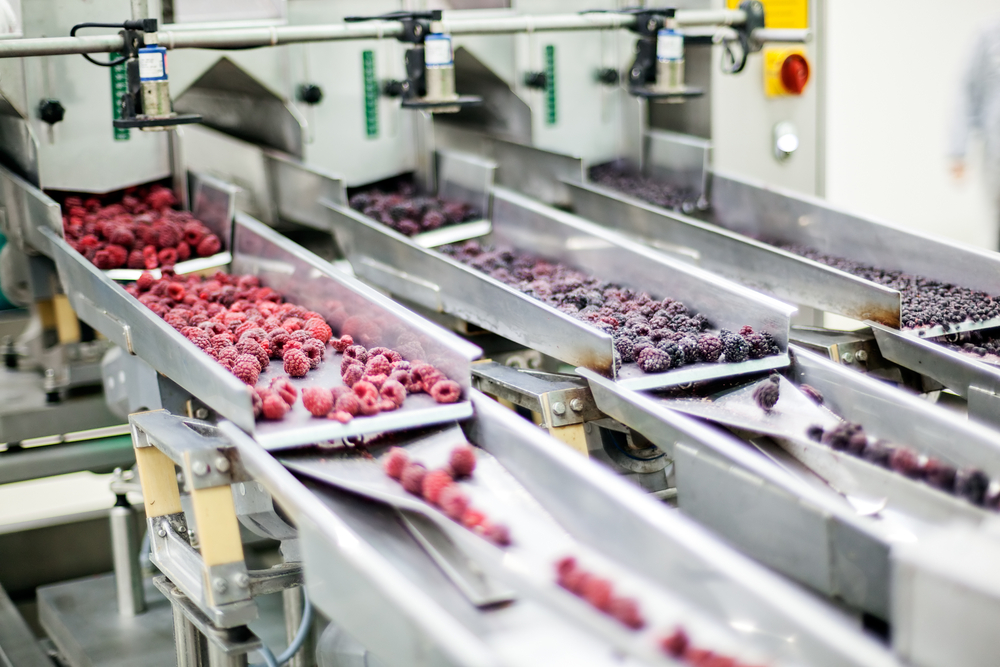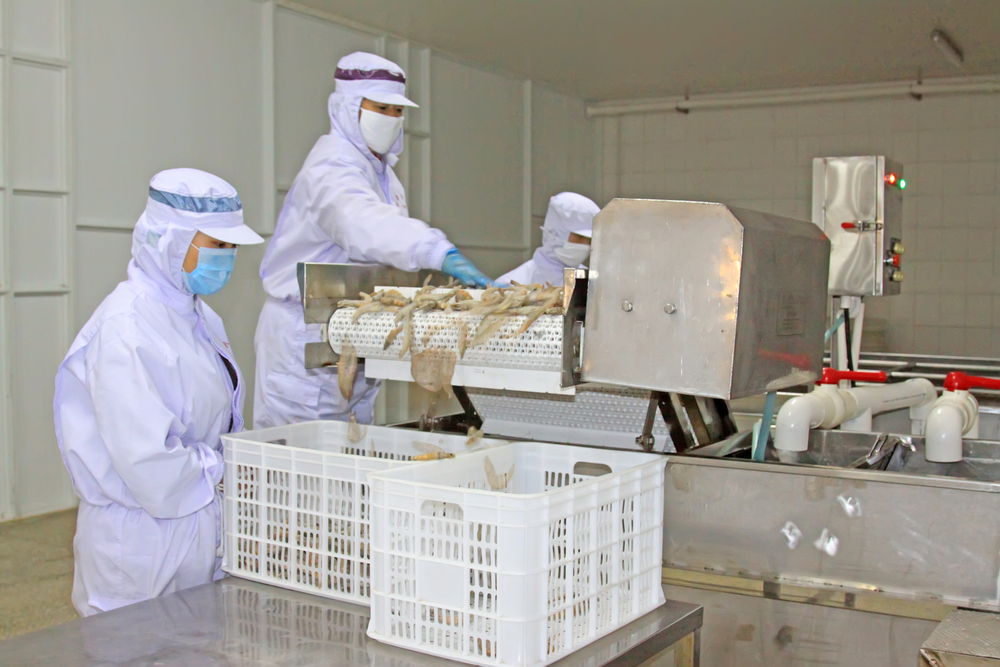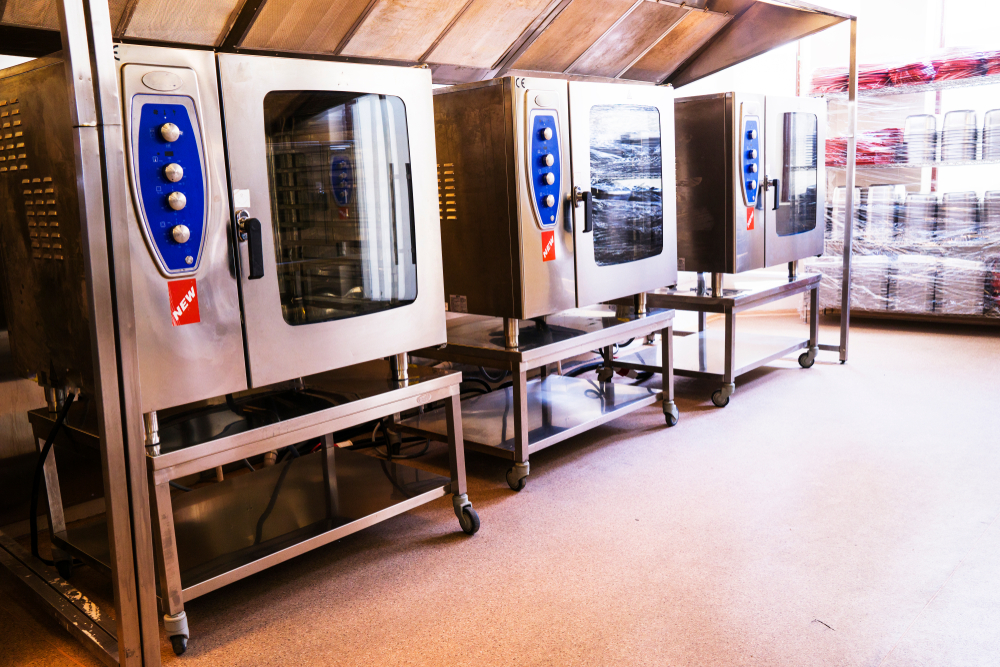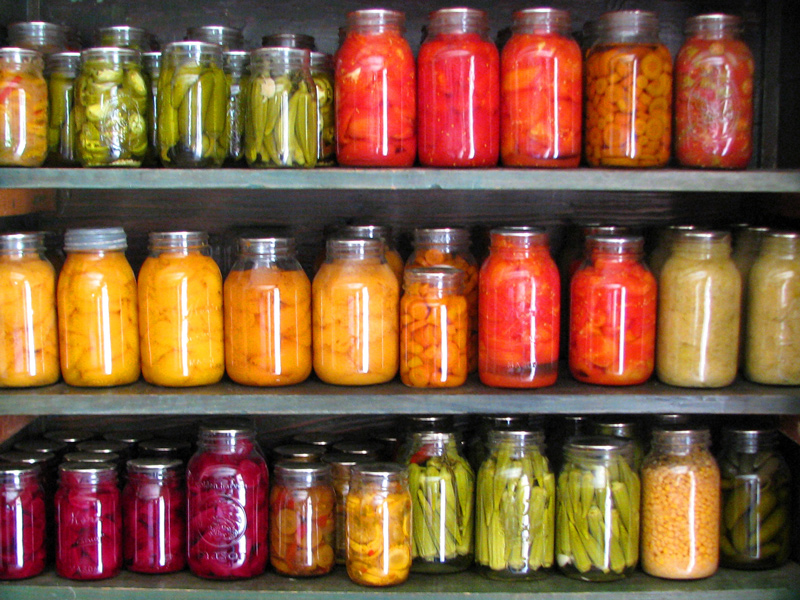Hello!
 Consumers are increasingly becoming aware of all the safety regulations in food processing. They are demanding a safe food supply without compromising the nutritional content, quality and shelf life of the food they buy. As an FMCG industry, you should be aware of all the safety regulations and food processing options you can follow.
Consumers are increasingly becoming aware of all the safety regulations in food processing. They are demanding a safe food supply without compromising the nutritional content, quality and shelf life of the food they buy. As an FMCG industry, you should be aware of all the safety regulations and food processing options you can follow.
If your FMCG industry is planning to employ some new food processing methods, you need to first know your packaging limitations, challenges, opportunities and costs.
Luckily many FMCG industries are changing their packaging methods based on the method of food processing. But how and why exactly does packaging requirements
Firstly, the selection of food processing methods majorly depends on the type of food you are processing. Critical points include pH, nutritional content, state of matter (Solid, liquid, semi-liquid, semi-solid, liquid with particulates) and heat stability. Second, the target micro-organism is selected. Then the best and economical method to eliminate this targeted agent is specified. The intended shelf life is important, as well as the environment in which the food is going to be stored. Then the nutritional specifications are considered.
Packaging trends are changing a lot continuously. One big responsibility of FMCG industry is distribution & storage of processed food and hence the selection of packaging materials becomes an integral part of the process.
 In this blog, we are going to explore packaging options for the following thermal and non-thermal methods
In this blog, we are going to explore packaging options for the following thermal and non-thermal methods
- Retort Processing
- Aseptic Processing
- Microwave-assisted thermal sterilization
- High- and ultra-high-pressure processing (HPP / UHP); and
- High-intensity light pulse (HILP)
Let us first discuss the thermal methods of food processing
The whole purpose of thermal processing is to increase the temperature of the food and reduce the level of microorganisms to an acceptable level. However, nutrient and quality factor of the food is also adversely affected by this process. Blanching, pasteurization and sterilization can be selected depending on the intended severity of heating. The faster the food is heated to the desired temperature and faster is cooled back to ambient temperature, the shorter is the process and better is the nutritional retention.
Retort Processing
 Retort processing is applied to pasteurization (elimination of vegetative pathogenic microorganism) temperature when the food is not expected to extend the shelf life of two months or sterilization (reduction of heat resistant spores) resulting in the shelf life of two to three years.
Retort processing is applied to pasteurization (elimination of vegetative pathogenic microorganism) temperature when the food is not expected to extend the shelf life of two months or sterilization (reduction of heat resistant spores) resulting in the shelf life of two to three years.
This method can be applied to liquids, semi-liquids, solids and liquids with particulate. The cost of thermal processes is usually lower than non-thermal processes,
Packaging requirement: The packaging used in the thermal process must be heat and mild pressure resistant. The barrier must not change its properties when subjected to high temperature and should not interact with food material. Glass, steel cans, metal or plastic cans, metallized pouches and trays are generally used.
The food in retort processing is packaged prior subjecting to thermal heat and hence the chances of food contamination are close to zero. thermal processing is been used for more than a century and hence all the parameters are usually known. The optimization techniques and experience exits. The nutritional requirement can be precisely calculated. Depending on food though, the percentage of nutritional content may vary. Even though retort processing is already a developed process, it continuously witnesses some technical improvements.
Aseptic Processing & Packaging
 Aseptic food processing is limited to the food material which can be pumped in heat exchangers and can be used for pasteurization and sterilization. This is also old technology and sees a continuous improvement.
Aseptic food processing is limited to the food material which can be pumped in heat exchangers and can be used for pasteurization and sterilization. This is also old technology and sees a continuous improvement.
Aseptic processing accomplishes the heating and cooling faster, hence better nutritional and quality is maintained.
Packaging requirements: After processing, the food must be stored in a container in a sterile environment. The container must also be sterilized is the same environment using chemical or light processes. Rectangular cartons are typically used in aseptic packaging since they allow reasonable improvements in space savings in warehouses compared to rigid bottles or cans.
Microwave-assisted Thermal Sterilization
 Microwave-assisted thermal sterilization is an advanced technique and allows in container processing of food with rapid heating, and therefore maintaining a better nutritional quality. Water is used as a heating medium for uniform distribution of heat and avoid overheating of edges as observed in retort and aseptic processing. The frequency used is 915 MHz instead of the 2450 MHz used in home microwave ovens. This allows for better penetration and more uniform heating.
Microwave-assisted thermal sterilization is an advanced technique and allows in container processing of food with rapid heating, and therefore maintaining a better nutritional quality. Water is used as a heating medium for uniform distribution of heat and avoid overheating of edges as observed in retort and aseptic processing. The frequency used is 915 MHz instead of the 2450 MHz used in home microwave ovens. This allows for better penetration and more uniform heating.
Solids, semi-solids, liquids and liquids with particulate can be processed using Microwave-assisted thermal sterilization. A high-quality barrier is used as a packaging material.
Packaging requirement: The packaging material must be transparent to the frequency used. The packaging material should not interact with processed food. High-barrier plastic pouches, trays and lidding are used as packaging materials (such as ethylene vinyl alcohol or EVOH).
This process nearly reduces the processing time by one-quarter of the time required for the traditional sterilization process. However, for non-homogeneous food maintaining a particular temperature and predicting the outcome is difficult.
Non-Thermal Methods
 Since heating may start affecting the nutritional content of the food, newer methods are been developed to eliminate the microorganisms and also maintain nutritional quality. It means that deactivation of targeted microorganisms can be accomplished without heating and playing with the nutritional quality. Ultra-high pressure (UHP), pulsed electric fields (PEF), pulsed magnetic fields, dense phase carbon dioxide (DPCD), and other technologies have been developed.
Since heating may start affecting the nutritional content of the food, newer methods are been developed to eliminate the microorganisms and also maintain nutritional quality. It means that deactivation of targeted microorganisms can be accomplished without heating and playing with the nutritional quality. Ultra-high pressure (UHP), pulsed electric fields (PEF), pulsed magnetic fields, dense phase carbon dioxide (DPCD), and other technologies have been developed.
We’ll take a closer look at UHP and HILP.
Ultra-high-pressure Processing
 In ultra-high pressure processing, the food is packaged in a container with a working fluid (Generally water) and subjected to a pressure of around 200 to 1000 MegaPascal. After about 5 minutes the food packages are removed from the pressure container.
In ultra-high pressure processing, the food is packaged in a container with a working fluid (Generally water) and subjected to a pressure of around 200 to 1000 MegaPascal. After about 5 minutes the food packages are removed from the pressure container.
Solid foods, liquid with particulates and liquid food can be processed using this method. Porous foods are avoided since such high-pressure eliminate the pores and food shrinks in size.
Vegetative microorganisms are easily eliminated by this pressurized chamber. To deactivate the microbial activity, you need to heat the pressurized chamber to almost 85 degrees Celsius. Although this is heating, the heat is minimal compared to thermal processing which typically crosses 100 degrees Celsius and hence the loss attributed in non-thermal processing is much less.
Due to high pressure, the temperature inside the pressure chamber tends to increase by a few degrees. Hence overheating must be avoided by controlling the pressurization rate. Upon depressurization, the temperature is decreased. This heating and cooling effect can be used to create a combined process of ultra-high thermal pressure processing. The time for heating/cooling is much reduced and hence has a lesser impact on the nutritional content.
 Packaging requirement: Since liquid and semi-solid food tend to shrink during pressurization, the packaging material should be able to accommodate this temporary change. Thus hard packages are not appropriate. Flexible packaging are generally used in this process.
Packaging requirement: Since liquid and semi-solid food tend to shrink during pressurization, the packaging material should be able to accommodate this temporary change. Thus hard packages are not appropriate. Flexible packaging are generally used in this process.
Flexible material must be used carefully since some materials are known to cause blisters when highly pressurized. The properties of the material tend to alter. Significant increases in the permeability of oxygen, carbon dioxide and water vapour were observed in some films films after high-pressure treatment.
Since the pressure is applied simultaneously at all points, the container of any size and shape can be used. Hexagon shaped packaging increase packing into cylindrical pressure vessels, and improve the economics of the operation.
The initial cost of this equipment is high and it takes much time to process than the thermal methods as the food is pressurized in batches of an equal interval of time.
High-intensity Light Pulse (HILP)
 It is an emerging technology of food processing where the food is subjected to short and intense pulses of light. (200 to 1,100 nanometer/nm). The intensity is measured in Joules (joules/cm2). The ultraviolet component of the light is responsible for this desirable effect. UV absorption by DNA and its disruption is the primary cause of inactivation.
It is an emerging technology of food processing where the food is subjected to short and intense pulses of light. (200 to 1,100 nanometer/nm). The intensity is measured in Joules (joules/cm2). The ultraviolet component of the light is responsible for this desirable effect. UV absorption by DNA and its disruption is the primary cause of inactivation.
The microbes susceptible to HILP are Gram-negative bacteria, Gram-positive bacteria and fungal spores.
This technology is still in its adolescent stage. Reports of enzyme inactivation in liquids are published. Since solid prevents the penetration of light, the attempts are yet unsuccessful.
Packaging requirements: The first desirable characteristic of the packaging material is that the packaging material must be transparent to UV light.
HILP is superior to other chemical sterilizations such as hydrogen peroxide since it doesn’t leave any undesirable traces. The intensity of light is kept in pulses to avoid overheating of food. Undesirable wavelengths can be filtered out easily.
The effect of ultraviolet on nutritional content is yet to be studied. Too much usage of ultraviolet creates “ozone”, which is presently creating limitations with work exposure.
Also read:
- What Does Financial Compatibility Look Like in a Relationship?
- The Amazing Benefits of Eating Toasted Bread
- When Would You Use Reseller Hosting?
Conclusion
Packaging forms an important strategic and logistic part of any FMCG company. Knowing the method employed in food processing may help you avoid some disastrous decisions. Consumers are highly aware of the food they are consuming. You advertising the fact that your packaging is aligned with the method of food processing may give your brand a positive boost in the market. It enables you to make better material choices to make sure you deliver the best tasting, healthiest and safest food to today’s discerning consumers.
Thank you!
Join us on social media!
See you!






